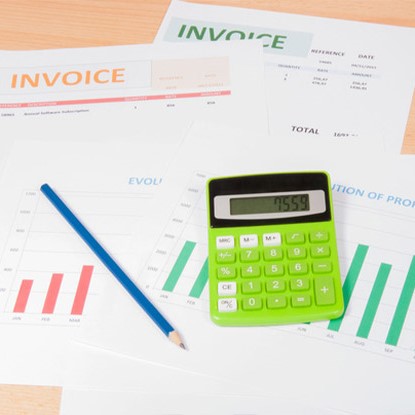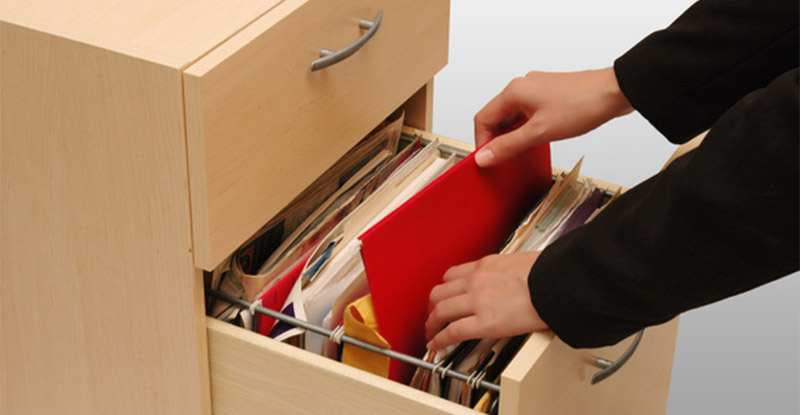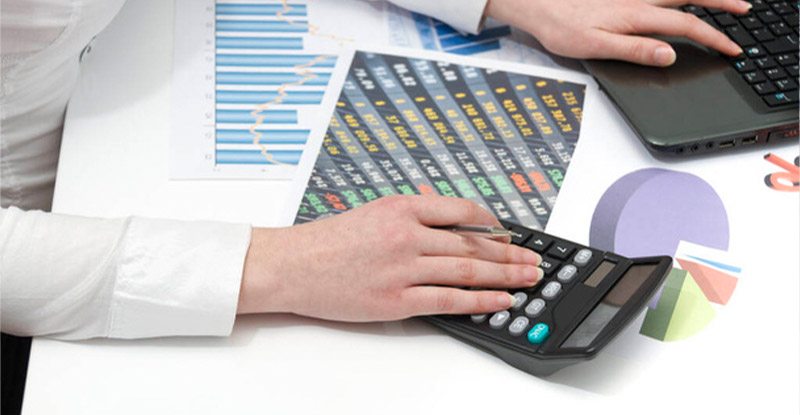What is a Self-Billing Invoice and Why Should You Consider Using It?
Explore the intricacies of self-billing invoices and discover how they can streamline your business processes

Explore the intricacies of self-billing invoices and discover how they can streamline your business processes

Managing invoicing and billing can be a challenging task for many businesses, especially those that deal with a large volume of transactions. One way to simplify the process and ensure timely payments is by using a self-billing invoice system. This approach involves the buyer of goods or services generating the invoice on behalf of the supplier. In this blog post, we will explore what a self-billing invoice is, how it works, and some of the benefits it offers.

Dive into the future of invoicing with InvoiceAction self-billing capabilities. Say goodbye to tedious manual processes and hello to efficiency. Explore now!
A self-billing invoice is a process where the buyer of goods or services takes responsibility for generating an invoice on behalf of the supplier. This approach is typically used in B2B transactions where the supplier has a regular relationship with the buyer, and they agree to use self-billing as the payment method.
In a self-billing system, the buyer generates the invoice using the supplier’s information and sends it to them for approval. Once approved, the supplier can issue a credit note against the invoice so that the payment is processed via the buyer’s accounts payable system. The self-billing process streamlines invoicing, reduces errors, and ensures payments are made on time.
There are several benefits to using self-billing.
Finally, self-billing can lead to improved communication and collaboration between buyers and suppliers, as they work together to streamline the invoicing process.
Self-billing and order management are intrinsically linked in many modern business processes, especially when it comes to streamlining operations and ensuring efficiency. Here’s how they are connected.

Step 1: The entire self-billing process begins when a buyer places an order. The details of this order, captured in the order management system, become the foundation for the subsequent self-billed invoice.
Step 2: Once goods are received or services are rendered, the buyer refers to the initial order details to confirm the quantity and price of the items. This is crucial because the self-billed invoice is based on this verification.
Step 3: Automated invoice is being created. Leveraging the data from the order management system, self-billing software can automatically generate invoices on behalf of the supplier, using the exact details of the original order.
Step 4: Since the self-billed invoice is derived from the original order data, it drastically reduces the possibility of discrepancies between the order and the invoice. This ensures smoother transactions and fewer disputes.
Integrating order management with self-billing can accelerate the payment process. Once the order is confirmed and the goods/services are accepted, the invoice can be immediately generated, leading to quicker payment cycles.
In addition, a seamless connection between order management and self-billing ensures that inventory levels are updated in real-time. Moreover, with quicker invoicing and payment processes, businesses can have better visibility and management of their cash flow.
Integrating self-billing with order management ensures data consistency. There’s a single source of truth, reducing the risk of errors that might arise from manually entering data into separate systems.
In essence, linking self-billing with order management creates a harmonized system where information flows smoothly from the point of order initiation to payment, enhancing efficiency, reducing errors, and fostering better business relationships.
Transform your billing, transform your business! Experience the seamless integration and automated brilliance of self-billing with OrderAction. Discover the potential and elevate your operations today!
Book a demo now
A self-billing invoice is where the buyer issues the invoice to themselves, instead of the traditional method where the supplier issues the invoice. This system is typically agreed upon by both parties (the buyer and supplier), often with a formal agreement outlining the specifics. The buyer then takes responsibility for creating, authenticating, and sending the correct invoice.
Self-billing invoices have many benefits. For example, they reduce administrative burden on the supplier side which in turn minimizes paperwork and administrative costs. Also, potential reduction in errors since the buyer knows precisely what they have ordered and received. This, in turn, can speed up the invoicing process, leading to quicker payments.
There are also challenges of self-Billing invoices. This type of invoicing requires a high level of trust between the buyer and supplier who also must adhere to local tax and business regulations. Both parties need systems that can handle this billing methodology. To simplify self-billing, AP automation is beneficial.
Accounts Payable (AP) Automation refers to the technology used to streamline and automate accounts payable processes, removing manual tasks and introducing centralized, digital workflows.
Ready for game-changing efficiency? Unleash the power of self-billing invoicing with docAlpha and watch as your invoicing process becomes a breeze.
Tap into the revolution now!
Book a demo now
When combining self-billing and AP automation:
As you can see, the combination of self-billing and AP automation can significantly streamline the invoicing and payment process for businesses. This approach is especially beneficial for businesses with high transaction volumes or complex supply chain processes.
Adopting such practices can lead to cost savings, improved accuracy, and stronger vendor relationships. However, it’s essential to ensure that the implemented systems are compliant with relevant regulations and are mutually beneficial for both buyers and suppliers.
If you’re considering using a self-billing system, there are some best practices to follow. First, ensure that your contracts or agreements with suppliers clearly state that you will be using a self-billing system. Second, establish a clear process for generating, approving, and sending invoices to suppliers. Third, use a dedicated software system to manage the invoicing process, as this will help to reduce errors and improve efficiency.
Elevate, automate, celebrate! Step up your invoicing game with InvoiceAction’s unmatched self-billing features. Dive into a world where accuracy meets automation. Join us on this exciting journey!
Book a demo now
Ensuring the accuracy of self-billed invoices is crucial for both buyers and suppliers to maintain trust, compliance, and streamlined financial processes. Here are steps and best practices to ensure the accuracy of self-billed invoices.
Before initiating self-billing, both the buyer and supplier should have a clear and comprehensive agreement in place. This agreement should detail the specifics of the self-billing process, the frequency of invoicing, rates, and any other pertinent details.
Ensure that there’s a standardized and agreed-upon pricing structure in place. Any changes in pricing should be communicated and agreed upon in writing before implementing in the self-billing system.
Suppliers should regularly match self-billed invoices against their records of goods supplied or services rendered. Any discrepancies should be noted and addressed promptly.
Use automated invoicing systems such as InvoiceAction that can pull data directly from purchase orders or contracts. This reduces the chances of manual errors in invoice generation.
Maintain a clear audit trail. Both parties should keep records of all transactions, correspondence, and agreements. This will be valuable in case of any disputes or audits.
Periodically review the self-billing system and process. Check for updates in tax rates, regulatory requirements, and any changes in the business relationship that might affect billing. Each self-billed invoice should contain all necessary details, such as description of goods/services, quantity, unit price, date, and any other relevant information.

Establish clear communication channels between the buyer and supplier. Regularly check-in to discuss any issues, updates, or concerns related to self-billed invoices.
Ensure that the self-billing process and invoices comply with local tax and regulatory requirements. This includes correct calculation and application of VAT or other relevant taxes.
Also, make sure to periodically audit the self-billing process. This could be an internal audit or, occasionally, an external one to ensure transparency and accuracy.
Create a mechanism for suppliers to provide feedback or raise concerns about the self-billed invoices they receive. Address these concerns in a timely manner.
Implement technology solutions that can verify the accuracy of the data. For instance, Optical Character Recognition (OCR) can be used to cross-check invoices against delivery notes.
By taking these steps, businesses can ensure that their self-billed invoices are accurate, thereby maintaining trust and efficiency in their financial processes.
Self-billing can be an excellent option for businesses looking to streamline their invoicing and payment processes. However, it’s not suitable for everyone. The decision to use self-billing should be based on factors such as the volume of transactions, relationship with suppliers, and internal capabilities for managing the invoicing process.
If you’re considering self-billing, it’s important to evaluate your current processes and determine whether adopting this system will provide the desired benefits.
Why wait? innovate! Leap into the future of seamless invoicing. Discover how OrderAction automated order management elevates self-billing capabilities and redefines your business processes. Explore the revolution today!
Book a demo now
In summary, self-billing is an invoicing system in which the buyer generates the invoice on behalf of the supplier. This approach can simplify invoicing, reduce errors, improve communication, and ensure timely payments.
However, like any invoicing system, it’s essential to assess your needs and capabilities to determine whether self-billing is right for you. With proper planning and execution, self-billing can be an excellent way to improve your business’s invoicing and payment processes.
Harness the future of automated accounts payable today! Witness the magic of automation with docAlpha’s advanced self-billing. Let innovation drive your success. Dive in and transform your business now!
Book a demo now
A self-billing invoice is a system where the buyer produces the invoice on behalf of the supplier and sends a copy to the supplier, rather than the supplier creating and sending the invoice to the buyer.
Businesses might choose self-billing because it can streamline the invoicing process, reduce administrative burden, decrease the potential for errors, and expedite payment cycles.
Yes, self-billing is legal in many jurisdictions. However, both the buyer and supplier typically need to agree on a self-billing arrangement in writing, and it must comply with local tax regulations and requirements.
The buyer, when issuing a self-billed invoice, is responsible for correctly calculating and applying the appropriate VAT or sales tax rates. The invoice must meet the standard requirements for tax invoices in the relevant jurisdiction.
Yes, it’s common practice for both the buyer and supplier to sign a self-billing agreement. This agreement outlines the terms, responsibilities, and duration of the self-billing arrangement.
Suppliers should regularly review and reconcile self-billed invoices against their own records, deliveries, and agreed prices. Any discrepancies should be communicated to the buyer promptly.
Yes, many businesses now use electronic systems to generate, send, and store self-billed invoices, enhancing efficiency and reducing the need for paper records.

If a supplier disputes a self-billed invoice, it should be addressed as per the terms outlined in the self-billing agreement. Both parties will typically review the relevant documentation and work together to resolve any discrepancies.
While many businesses can benefit from self-billing, it’s especially valuable for those with regular, recurring transactions with consistent suppliers or industries where pricing and deliveries are standardized.
Retention requirements can vary by jurisdiction, but typically, businesses should retain invoices for a minimum period required by local tax or business regulations, often several years. Always consult with local regulatory bodies or a financial professional to ensure compliance with all self-billing requirements in your specific jurisdiction.